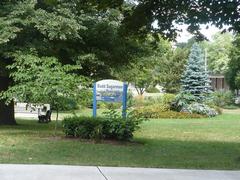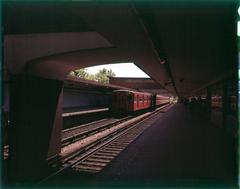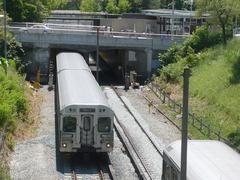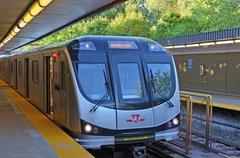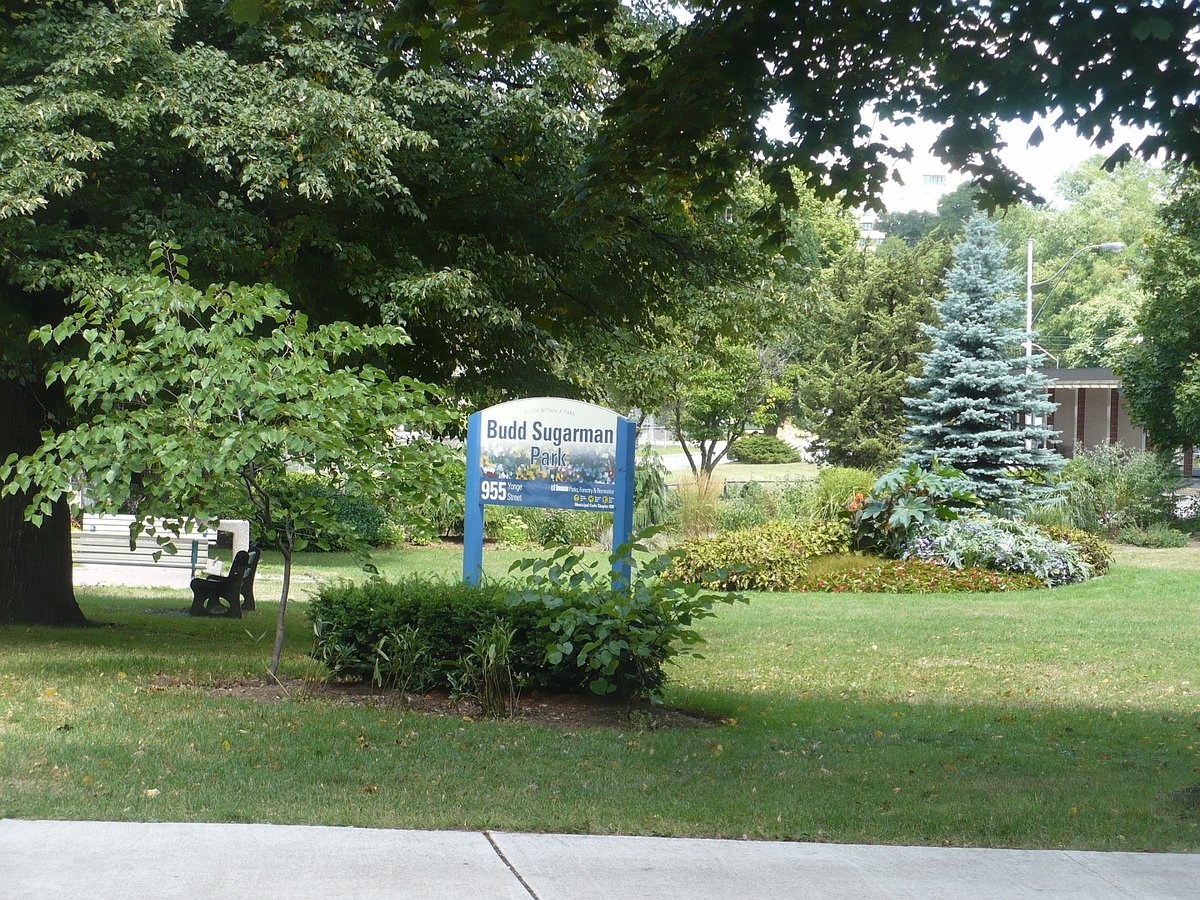
Rosedale Toronto Historical Sites: Visiting Hours, Tickets, and Travel Guide
Date: 15/06/2025
Introduction
Rosedale stands among Toronto’s most prestigious and historically significant neighborhoods, blending architectural grandeur, lush natural landscapes, and cultural vibrancy. Established in 1824 by Sheriff William Botsford Jarvis, Rosedale’s name originates from his wife Mary’s admiration for the wild roses that once covered the hillsides. Today, the neighborhood’s unique, winding street patterns and abundant green spaces are a living testament to its storied past and the garden suburb movement, which emphasizes harmony with natural topography and preservation of green areas (Barry Cohen Homes).
Visitors to Rosedale can expect a rich architectural tapestry spanning Victorian, Georgian, Tudor, and Edwardian styles, many protected by Heritage Conservation District designations. Beyond the stately homes, the neighborhood’s network of ravines and parks—including Don Valley Brick Works Park and David A. Balfour Park—offer scenic trails and outdoor activities year-round (Armin Group; Toronto For You). Rosedale’s accessibility via subway, bus, and cycling paths makes it an ideal destination for exploring Toronto’s history, culture, and natural beauty.
This comprehensive guide provides essential information on Rosedale’s historical landmarks, visiting hours, ticketing details, travel tips, and nearby attractions, ensuring a memorable exploration of one of Toronto’s most iconic neighborhoods.
Table of Contents
- Historical Development of Rosedale
- Geographical Layout and Urban Structure
- Practical Visitor Tips and Essential Information
- Visitor FAQs
- Architectural Heritage and Styles
- Cultural Significance and Community Life
- Architectural and Cultural Landmarks
- Parks, Ravines, and Green Spaces
- Outdoor Activities
- Visitor Tips and Practical Information
- Shopping in Rosedale
- Dining in Rosedale
- Historical Sites and Monuments in Rosedale
- Community Events and Festivals
- Wellness and Artisanal Experiences
- Practical Visitor Information
- FAQ
- Plan Your Visit and Stay Connected
Historical Development of Rosedale
Early Foundations and Naming
Rosedale’s story begins in 1824, when Sheriff William Botsford Jarvis acquired a 110-acre estate in present-day South Rosedale. Inspired by the wild roses adorning the hills, his wife Mary gave the neighborhood its enduring name. Her explorations shaped Rosedale’s winding, tree-lined streets, which continue to define the area’s charm (Barry Cohen Homes).
Architectural Heritage and Conservation
The neighborhood’s development from the 1860s to the 1930s produced an array of Victorian, Georgian, Tudor, and Edwardian mansions. Many are listed on Toronto’s Inventory of Heritage Properties and protected by Heritage Conservation District status, ensuring the preservation of Rosedale’s unique garden suburb layout and architectural legacy (Barry Cohen Homes).
Social and Cultural Evolution
For over a century, Rosedale has attracted Toronto’s most affluent and influential residents—business leaders, professionals, artists, and academics. The neighborhood’s exclusivity and elegance are maintained through active community involvement and heritage preservation (Barry Cohen Homes).
The Garden Suburb Movement
Rosedale is a hallmark of the garden suburb movement, characterized by curving streets, expansive green spaces, and integration with the natural landscape—a design philosophy that remains evident in the neighborhood’s tranquil setting (Barry Cohen Homes).
Geographical Layout and Urban Structure
Boundaries and Location
Rosedale is situated northeast of downtown Toronto, bounded by Bloor Street to the south, Yonge Street to the west, the Canadian Pacific Railway tracks to the north, and Bayview Avenue/Don Valley Parkway to the east (Best in Hood). This strategic location ensures easy access to both urban amenities and natural escapes.
Ravines and Green Spaces
Rosedale is defined by its ancient ravines—Vale of Avoca, Moore Park, Park Drive, and Rosedale Valley—creating a sense of seclusion and tranquility. These ravines offer scenic walking and cycling trails, connecting to the Don River watershed and the Beltline Trail (Barry Cohen Homes).
The Don Valley Brick Works Park, at Rosedale’s eastern edge, has been transformed from an industrial site into the Evergreen Brick Works—a hub for environmental education, art, and ecological restoration. The park features the Weston Family Quarry Garden and is an Area of Natural and Scientific Interest (Toronto For You).
Visiting Hours and Tickets for Don Valley Brick Works Park
- Park Hours: Open year-round from dawn to dusk.
- Evergreen Brick Works Centre: Typically open 9 AM to 5 PM; hours may vary seasonally.
- Admission: Free for park and trails. Tickets may be required for certain events or guided tours—purchase online or onsite as indicated.
- Official Information: Evergreen Brick Works
Street Patterns and Residential Character
Distinctive for its winding roads and mature trees, Rosedale’s organic street design results from early estate trails and ravine topography. The area is primarily residential, with grand single-family homes, select apartment buildings, and meticulously maintained gardens (Barry Cohen Homes).
Neighborhood Divisions
Rosedale is traditionally split into South and North Rosedale. South Rosedale, closer to Bloor Street, boasts the grandest historic homes, while North Rosedale is more family-oriented, with proximity to parks and recreational facilities (Barry Cohen Homes).
Connectivity and Accessibility
Rosedale subway station on Line 1 (Yonge-University) connects the neighborhood directly to downtown and other districts. Bus routes and cycling paths traverse the area, while nearby Yonge and Bloor Streets offer access to shopping and dining (Barry Cohen Homes; Map of Toronto).
Practical Visitor Tips and Essential Information
Exploring Rosedale’s Attractions
- Don Valley Brick Works Park: Open year-round; Evergreen Brick Works Centre 9 AM–5 PM. Free admission; event tickets as required (Toronto For You).
- Rosedale Ravine Trails: Open during daylight, excellent for walking, jogging, and cycling—no tickets required.
- Historic Homes and Streetscapes: Best enjoyed via self-guided walking tours, especially in spring and fall.
Getting Around
- Public Transit: Rosedale subway station and multiple bus routes provide easy access (Trip Indicator).
- Cycling/Walking: The neighborhood is highly walkable with extensive trail networks.
- Parking: Limited and often restricted; public transit is recommended.
Visitor Demographics and Safety
Rosedale is a safe, family-friendly community with an affluent, diverse population. The neighborhood’s low crime rate and community cohesion contribute to its welcoming atmosphere (Barry Cohen Homes).
Amenities and Services
- Dining/Shopping: Upscale options along Yonge Street and nearby Summerhill (Barry Cohen Homes).
- Cultural Attractions: Proximity to the Royal Ontario Museum and Distillery District (Timeout Toronto).
- Recreation: Parks, playgrounds, and fitness facilities abound.
Seasonal Considerations
Spring and fall offer the best weather for outdoor exploration. Summer brings festivals and lush landscapes; winter offers peaceful, snow-covered trails.
Accessibility
Don Valley Brick Works Park, public parks, and Rosedale subway station are designed for accessibility. Some older homes and ravine trails may present mobility challenges (Toronto For You).
Visitor FAQs
Q: What are the visiting hours for Rosedale’s main attractions?
A: Don Valley Brick Works Park is open dawn to dusk year-round; Evergreen Brick Works Centre is typically open 9 AM–5 PM. Trails and parks are accessible during daylight hours.
Q: Are guided tours available?
A: Yes. Evergreen Brick Works and local operators offer guided tours, some requiring advance booking or tickets. Self-guided walking tours are also popular.
Q: Is Rosedale accessible for people with disabilities?
A: Key public spaces and transit are accessible; some older buildings and steep ravine paths may be challenging.
Q: Do I need tickets for Don Valley Brick Works Park?
A: Park and trails are free; events or special tours may require tickets.
Q: When is the best time for photography in Rosedale?
A: Spring and fall for vibrant colors; early mornings for soft light and fewer crowds.
Architectural Heritage and Styles
Origins and Early Development
Rosedale originated on the former Jarvis family estate, named for its wild roses and evolved from rural trails into a garden suburb. The neighborhood’s curving, tree-lined streets enhance its secluded and park-like ambiance (Armin Group; Torontoism).
Architectural Styles and Notable Architects
Showcasing a rich mix of Victorian mansions, Georgian homes, Tudor Revival cottages, and Arts and Crafts residences, Rosedale features works from architects such as E.J. Lennox (Casa Loma, Old City Hall) and modernists Ron Thom and Barton Myers (Armin Group; Torontoism).
Heritage Conservation and Preservation
North and South Rosedale are Heritage Conservation Districts under the Ontario Heritage Act, fostering preservation through homeowner incentives and community stewardship (Armin Group).
Streetscapes and Urban Design
Rosedale’s tranquil streetscapes, lush gardens, and historic facades create a “living architectural museum” (Residences Toronto).
Challenges of Maintenance and Modern Living
Maintaining Rosedale’s heritage homes demands specialized care and investment. Mature trees enhance beauty but require ongoing maintenance (Torontoism).
Cultural Significance and Community Life
Historical Legacy and Community Identity
The neighborhood’s identity is rooted in its architectural heritage and vibrant community engagement (Residences Toronto).
Arts, Education, and Cultural Institutions
Institutions like Branksome Hall, Rosedale Heights School of the Arts, and Muse Gallery enrich the neighborhood’s cultural life (Destination Toronto).
Green Spaces and Social Gatherings
Parks like Rosedale Park and David A. Balfour Park serve as venues for recreation and community events.
Exclusive Lifestyle and Local Amenities
Upscale boutiques, gourmet markets (Summerhill Market), and fine dining establishments add to Rosedale’s allure (Destination Toronto; Residences Toronto).
Walkability and Connectivity
Rosedale is highly walkable and well-connected to downtown and major transit lines (Torontoism).
Architectural and Cultural Landmarks
Historic Homes and Streetscapes
Admire preserved mansions and historic streets such as Roxborough Drive, Crescent Road, and Glen Road, showcasing Rosedale’s affluent heritage (historyoftoronto.ca).
Notable Landmarks
- Rosedale United Church: Early 20th-century architectural gem and community hub.
- Craigleigh Gardens: Former estate turned public park, retaining historical landscaping (torontoforyou.com).
- Rosedale Subway Station: A mid-century modern landmark connecting Rosedale to downtown.
Parks, Ravines, and Green Spaces
David A. Balfour Park and Rosehill Reservoir
This 20.5-hectare park features the Rosehill Reservoir, open lawns, ornamental gardens, and forested ravines. The Vale of Avoca Ravine and Yellow Creek Trail are popular for hiking, cycling, and birdwatching (torontoforyou.com).
Rosedale Park
The neighborhood’s central park offers tennis courts, playgrounds, sports fields, and hosts the annual Mayfair festival (historyoftoronto.ca).
Craigleigh Gardens
A tranquil park with mature trees and winding paths—perfect for relaxation and photography (torontoforyou.com).
Ravine System and Trails
- Yellow Creek Trail: Connects David A. Balfour Park to the Kay Gardner Beltline Trail—ideal for hiking and cycling, especially in autumn.
- Kay Gardner Beltline Trail: Historic rail-to-trail pathway linking Rosedale to other neighborhoods.
Outdoor Activities
- Hiking and Trail Running: Over 30 routes in David A. Balfour Park (torontoforyou.com).
- Cycling: 32 dedicated bike trails and access to citywide routes.
- Birdwatching: Rich biodiversity, especially during spring and fall migrations.
- Winter Activities: Snowshoeing and winter walks on scenic, snow-covered paths.
- Picnicking: Ample green spaces, benches, and picnic areas.
Shopping in Rosedale
Boutique Shopping and Local Finds
Yonge Street features independent boutiques, luxury shops, and specialty stores.
- Putti Fine Furnishings: European-style décor and gifts (Streets of Toronto).
- Coco Market: Wellness and specialty foods (Diary of a Toronto Girl).
- Wildly Delicious: Gourmet foods and picnic treats.
Shopping Tips
Most boutiques open late morning; weekdays are quieter. The area is walkable from Rosedale and Summerhill subway stations.
Dining in Rosedale
Culinary Diversity and Notable Restaurants
- Mineral: Filipino-inspired modern fusion (Hungry 416).
- Sorrel: French-Mediterranean cuisine.
- Carens Rosedale: French bistro with curated wine list.
- Brownes Bistro: French and Italian influences.
- Nadège Patisserie: Artisanal pastries and macarons (Diary of a Toronto Girl).
Dining Tips
Reservations are recommended. Many venues offer vegetarian, vegan, and gluten-free options.
Community Events and Festivals
Rosedale hosts the annual Mayfair festival and is within easy reach of citywide events such as Luminato and the Toronto Jazz Festival (Todo Canada).
Wellness and Artisanal Experiences
Enjoy wellness shops, yoga studios, and nearby culinary workshops such as chocolate-making (Airbnb Experiences).
Essential Visitor Information
- Getting There: Rosedale and Summerhill subway stations on the Yonge-University line.
- Parking: Limited; public transit recommended.
- Safety: Among Toronto’s safest neighborhoods.
- Accessibility: Well-maintained sidewalks; some historic buildings may have limited access.
FAQ
Q: Are there monuments open to the public?
A: Most heritage homes are private. Churches such as St. Cuthbert’s may be visited during services; walking tours highlight notable sites.
Q: Best times to visit?
A: Spring and fall for pleasant weather and colorful foliage.
Q: How to book guided tours?
A: Local operators offer weekend tours, bookable online.
Q: Dining options for dietary restrictions?
A: Yes, many restaurants offer vegetarian, vegan, and gluten-free choices.
Plan Your Visit and Stay Connected
Enhance your Rosedale experience by downloading the Audiala app for guided walking tours, historical insights, and up-to-date visitor information. Check the Rosedale neighborhood map and Toronto tourist maps for route planning.
Follow us on Instagram, Facebook, and Twitter for insider tips and the latest events.
Summary and Final Tips
Rosedale epitomizes Toronto’s harmonious blend of history, architecture, and natural beauty. Its preserved heritage homes, abundant green spaces, and vibrant community make it a top destination for cultural enrichment and outdoor enjoyment. Whether exploring ravine trails, attending local festivals, or indulging in boutique shopping and fine dining, Rosedale offers an unforgettable experience for every visitor (Barry Cohen Homes; Armin Group; Toronto For You; Trip Indicator; Diary of a Toronto Girl; Residences Toronto).
To make the most of your visit, use the Audiala app for guided tours and real-time updates, and consult official tourism resources for further information.
References and Further Reading
- Barry Cohen Homes: Visiting Rosedale
- Armin Group: Rosedale’s Storied Past
- Torontoism: Rosedale Community
- History of Toronto: Exploring Rosedale
- Toronto For You: David A. Balfour Park & Brick Works Park
- Diary of a Toronto Girl: Best Shopping in Toronto
- Streets of Toronto: Local Shops in Rosedale
- History of Toronto: Historic Neighborhoods
- Todo Canada: Toronto Festivals in June
- Trip Indicator: Toronto Tourist Attractions Map
- Residences Toronto: Rosedale Neighbourhood Spotlight
- Toronto For You: Don Valley Brick Works Park
